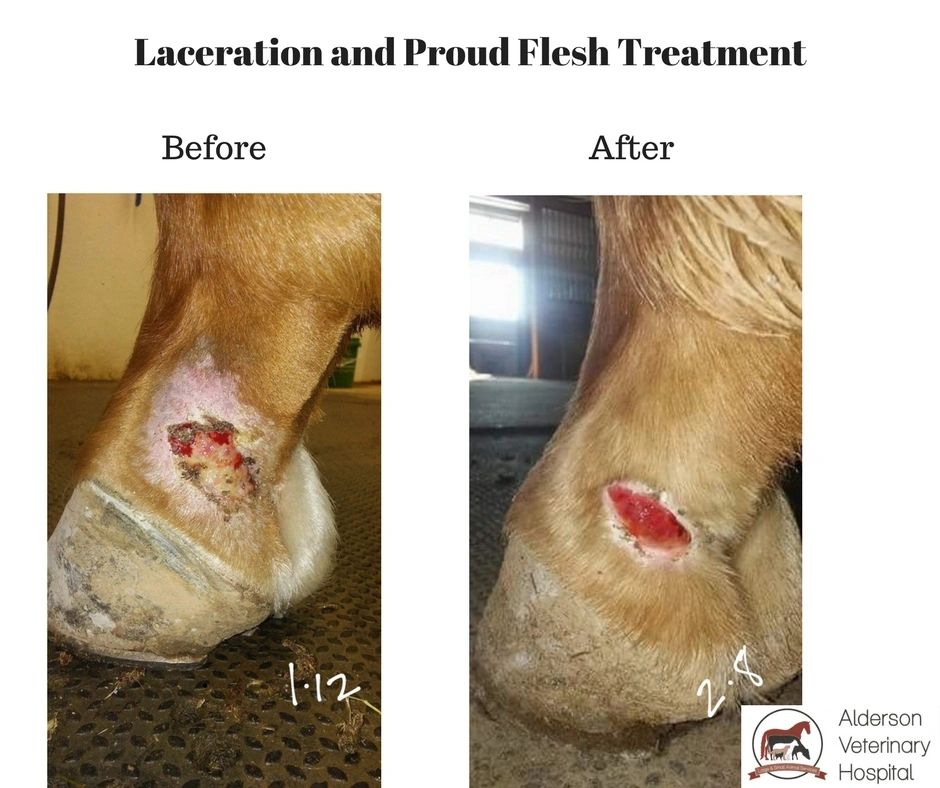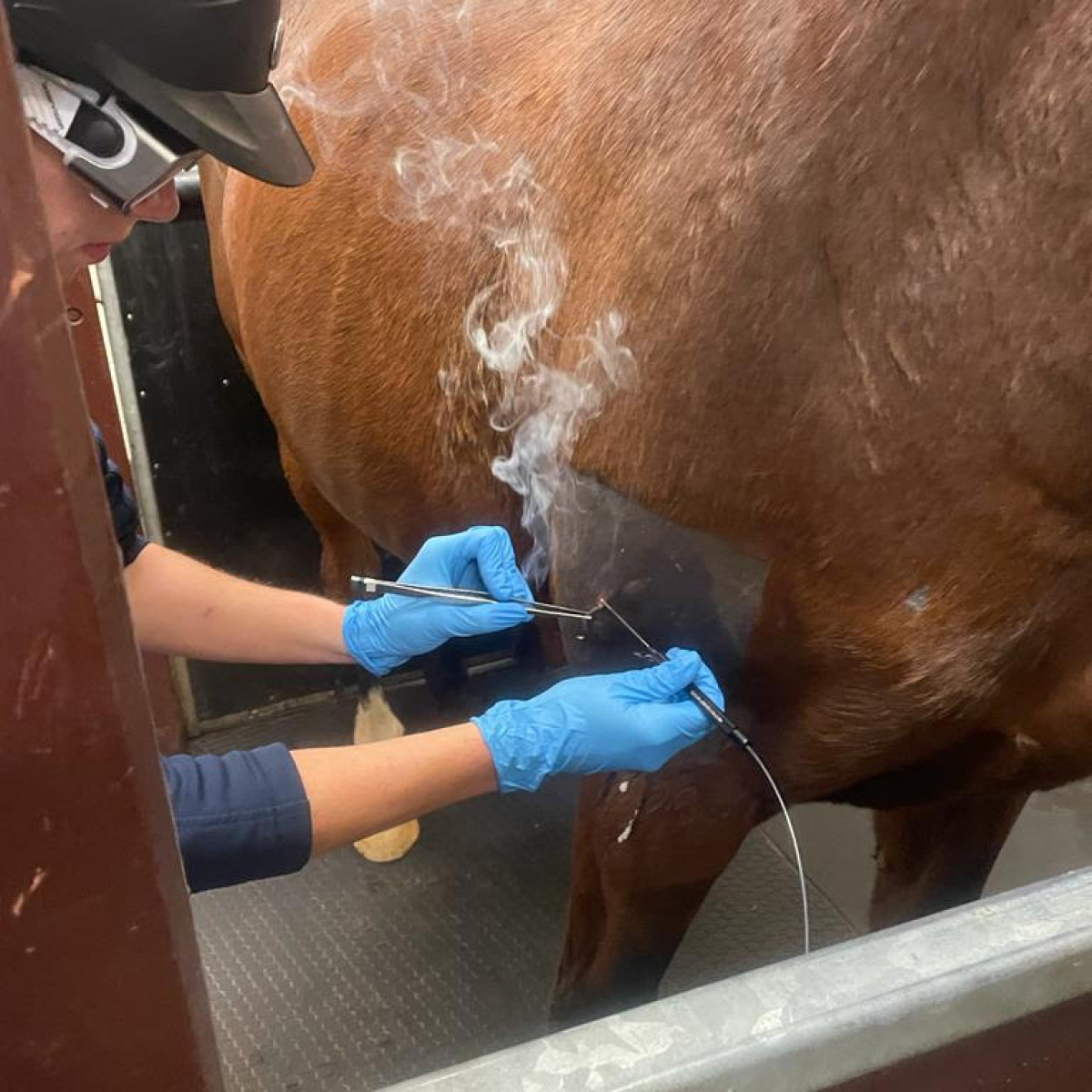Laser Therapy in Equine Treatment: A Modern Technique to Improving Steed Health And Wellness
Laser therapy has arised as an essential strategy in equine therapy, using concentrated light energy to foster cellular fixing and quicken recovery from a variety of conditions. By stimulating mitochondrial task and boosting ATP manufacturing, laser therapy not just boosts circulation yet likewise gives substantial pain alleviation.
Understanding Laser Treatment
Laser treatment, a non-invasive therapy method, has actually gotten considerable grip in equine medicine because of its efficacy in promoting recovery and discomfort relief. This sophisticated therapeutic technique makes use of focused light energy to permeate cells, promoting mobile repair and regrowth. The underlying mechanism entails the excitement of cellular mitochondria, bring about boosted production of adenosine triphosphate (ATP), the power currency of cells. Improved ATP degrees expedite cells repair service procedures and reduce swelling, making laser treatment particularly effective for dealing with musculoskeletal injuries, injuries, and other inflammatory conditions in steeds.
There are a number of kinds of lasers used in equine therapy, each with certain wavelengths and power outputs tailored to various healing needs. Low-level laser therapy (LLLT), also called chilly laser therapy, uses lower power degrees to promote cell function without causing thermal damages. High-intensity laser treatment (HILT), in comparison, uses higher power degrees to attain deeper tissue penetration and more considerable healing results.
Veterinarians use different laser gadgets and methods relying on the condition being treated and the desired depth of tissue infiltration. Correct training and experience are essential for making sure the risk-free and efficient application of laser therapy, thereby maximizing its therapeutic potential while minimizing risks.
Advantages for Horse Wellness


With a strong understanding of exactly how laser therapy functions, it is crucial to discover its many benefits for equine health and wellness. By stimulating mobile function, laser treatment promotes faster injury healing and aids in the regrowth of damaged cells.
In addition, laser treatment has been revealed to improve circulation, therefore enhancing blood flow to influenced areas. Boosted flow ensures that essential nutrients and oxygen are provided more successfully, assisting in the healing process. Additionally, laser treatment's anti-inflammatory effects assist in reducing swelling and pain, which is essential for the total well-being of the equine.
Discomfort administration is an additional significant benefit. By launching endorphins and blocking discomfort signals, laser treatment provides efficient, non-invasive remedy for both acute and chronic discomfort. This can add to improved movement and lifestyle for the pet.
Lastly, laser treatment is a non-invasive therapy alternative, reducing the danger of difficulties related to even more intrusive treatments. Its versatility and efficacy make it a very useful tool in contemporary horse vet medication.
Common Conditions Treated
Equine experts frequently come across a selection of conditions that can be efficiently handled through laser treatment. Among the most usual are musculoskeletal problems, consisting of ligament and ligament injuries. Laser treatment accelerates the recovery procedure by boosting cellular repair service and decreasing swelling, which is essential try this site for injuries such as tendonitis and suspensory tendon desmitis.
One more widespread condition treated with laser therapy is joint inflammation. Horses struggling with both intense and persistent joint inflammation benefit from the anti-inflammatory impacts of laser therapy, which aids to ease pain and enhance joint function. Additionally, laser therapy is used in the monitoring of wounds. Whether taking care of surgical incisions or traumatic injuries, the method advertises quicker tissue repair and reduces the risk of infection.
Horse breathing conditions, such as frequent airway blockage (RAO), also react favorably to laser treatment (Equine Therapy). Laser therapy is beneficial in dealing with hoof troubles, including laminitis and abscesses.
Treatment and Security
Applying laser therapy in equine therapy includes a precise procedure to make certain both effectiveness and security. The procedure starts with a complete vet Get More Information evaluation to establish the suitability of laser treatment for the equine's particular problem. Once regarded suitable, the treatment area is prepared by cleansing and, if needed, clipping the hair to enhance laser infiltration.
The expert should choose the right sort of laser, typically a low-level laser (LLLT) or a high-power laser (HPL), relying on the condition being treated. The laser tool is then adjusted to the ideal wavelength, power, and duration setups. Throughout the application, the specialist relocates the laser over the targeted area in an organized manner, making sure consistent and even exposure.
Safety methods are purely adhered to, consisting of the use of safety eyewear for both the professional and the equine. Additionally, it is vital to monitor the steed for any indicators of discomfort or negative reactions throughout the procedure. Post-treatment, the steed is typically offered a duration of rest to allow the restorative results to manifest.
Future of Equine Laser Treatment
As developments in veterinary medication proceed to unravel, the future of equine laser treatment holds substantial promise. Arising innovations and much deeper scientific insights are readied to fine-tune and expand the applications of laser treatment for horses. Among the most awaited advancements is the assimilation of sophisticated imaging strategies that enable more exact targeting of affected tissues, thereby improving therapeutic results. In addition, the development of mobile and user-friendly laser gadgets is likely to make this treatment extra available to a more comprehensive range of experts and horse proprietors.
Additionally, continuous research into the molecular and cellular systems of laser treatment will likely yield optimized procedures customized to specific conditions, boosting effectiveness and minimizing treatment times. Customized treatment strategies based on hereditary and biochemical pens could come to be a truth, ensuring that each horse gets one of the most appropriate and effective care.

Conclusion
Laser treatment in read review equine therapy represents a substantial development in veterinary treatment, providing a non-invasive solution to boost equine health. The future of equine laser treatment promises proceeded development and boosted results for equine health monitoring.
Comments on “Equine Therapy Programs: Transforming Lives One Ride at a Time”